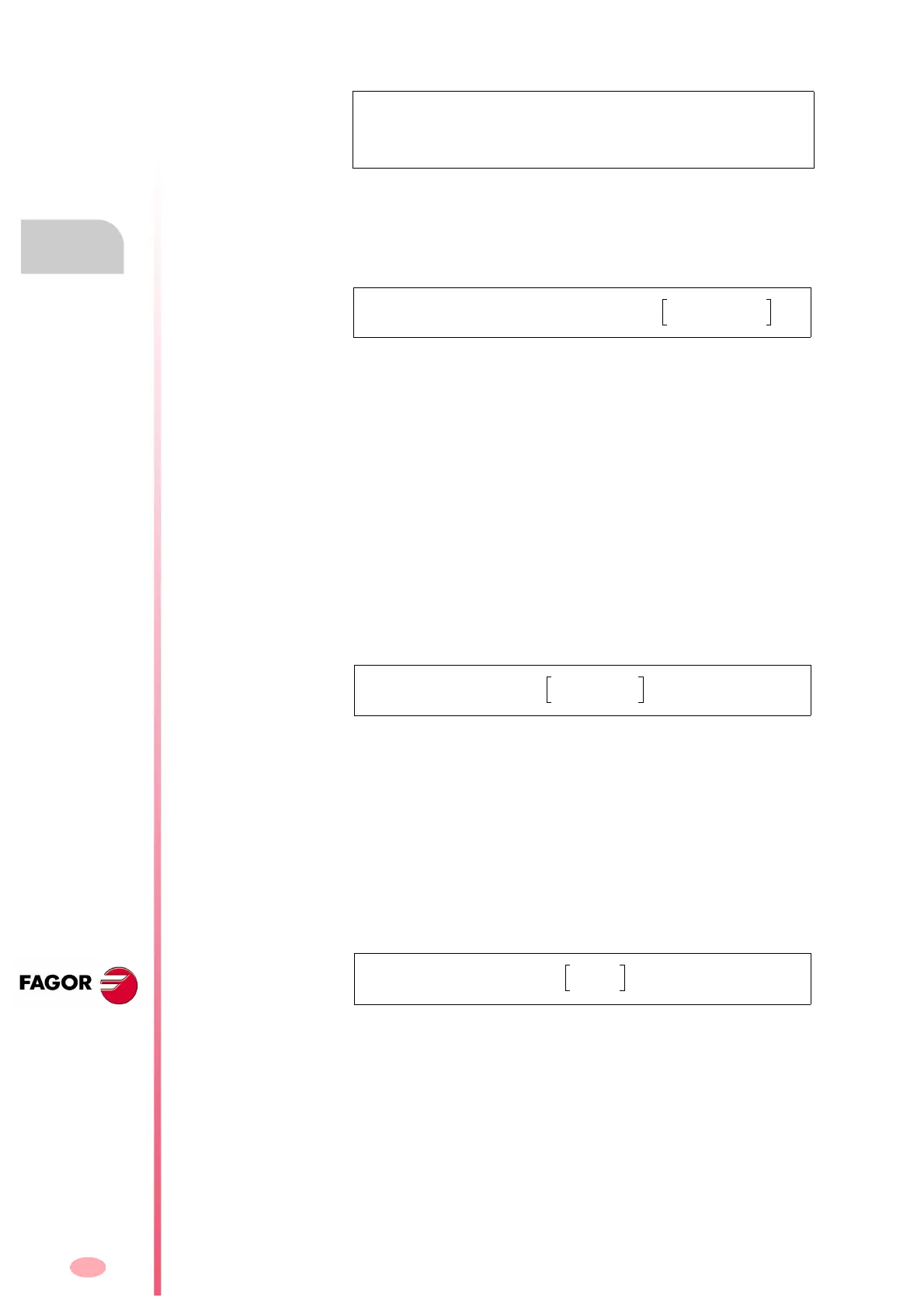Selection criteria
232
5.
SELECTING CRITERIA
Selection of the synchronous motor and its associated drive
206
DDS
HARDWARE
Ref.1310
The continuous torque M
S
:
is due to:
• the friction between table with its ways and with the ballscrew M
F
,
• the weight of the table when not moving horizontally M
W
,
• the cutting force of the tool M
C
.
Friction torque M
F
:
where:
Torque due to the weight of the table M
w
:
When the table does not move horizontally, but at an angle
like in figure
F. H5/1 the torque due to the weight of the table must also be considered.
If the total table weight is compensated for by means of some sort of hy-
draulic system or counterweights so the motor makes the same effort to
move the table up as to move it down, the
% factor will be 0. At the oth-
er end, if no compensation is applied,
% will be 1.
Torque due to the needed cutting force M
c
:
There is a cutting force between the tool and the part and this means a
hindrance for moving the table. The torque necessary at the motor to
make this movement is calculated as follows:
M
F
Torque due to friction in N·m.
m
Table mass in kg.
d
Leadscrew diameter in m.
g
Gravitational acceleration, 9.81 in m/s².
h
Leadscrew pitch per turn in m.
µ The friction coefficient between the table and the ways it moves on:
typical µ values depending on material:
Iron 0.1 ÷ 0.2
Turcite 0.05
Roller bearings 0.01 ÷ 0.02
M
W
Torque due to the weight of the table in N·m.
Inclination angle of the ballscrew with respect to the horizontal axis.
% Table weight compensation factor that can vary between 0 and 1.
M
C
Torque due to the cutting force of the tool in N·m.
F Cutting force of the tool in kg-force.
g Gravitational acceleration, 9.81 in m/s².
M
S
M
F
M
W
M
C
++=
M
CONTINUOUS
M
FRICTION
M
WEIGHT
M
CUTTING
++=
M
F
M
F TABLE–
M
F BALLSCREW–
+
1
i
---
mg h
2
----------------------------
d
10
------+
1
i
---
==
M
W
mgsin h
2
------------------------------------
%
i
-----
=
M
C
Fgh
2
-------------------
1
i
---
=

